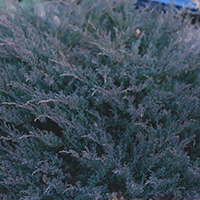The temperature hovered between 30 and 35°F today under mostly overcast skies. I spent an hour or so cutting back perennials, but even with gloves my hands grew cold and stiff. Even though most appearances in the garden suggest that something is over or has ended, the metabolism of the plants has simply shifted to a phase based on available light and temperature. For instance, as I cut away the browned mushy stems of Sedum ‘Autumn Joy’, I can see the tightly curled mint green buds of next spring’s growth at the base. As I canvas around the landscape pulling up plants of pesky hairy bittercress, (Cardamine hirsute), I notice the profusion of grass-like new growth put out by spring starflower (Ipheion uniflorum) before the temperatures dropped to freezing, and the racemes of buds set in late summer by Japanese andromeda (Pieris japonica).
As I work, I listen to birds chirping and singing all around me—cardinals, blue jays, titmice, chickadees, house finches, nuthatches, and an occasional downy woodpecker or flicker. The tone of the voices changes to alarm and warning. I stand up from kneeling and stare into the sky, searching for the source of distress….and yes, there he is, the red-tailed hawk who soars over this neighborhood on his regular route.
The foliage of Siberian carpet cypress (Microbiota decussata) turns a dramatic purple-bronze in winter. I admire the contrast with its background plants—Chamaecyparis pisifera ‘Boulevard’ and witch hazel (Hamamelis vernalis). This fascinating arrangement of colors reminds me that Andorra juniper (Juniperus horizontalis ‘Andorra’) is another plant that has interesting winter foliage. I walk around to the front to admire its beauty and am excited to see that my new holly (Ilex meserveae ‘Blue Princess’) planted two years ago has red drupes (commonly referred to as “berries”) for the first time. On my way back to the garage to put my tools away, I pass the mature beautyberry (Callicarpa bodinieri) whose six-foot high thick twiggy mass of bare stems is covered with lavender drupes (tiny berry-like fruit about the size of a lentil).


Leave a Reply
You must be logged in to post a comment.